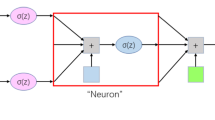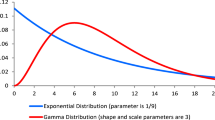Abstract
This paper develops a new approach to obtain the price and risk sensitivities of basket options which have a volatility smile. Using this approach, the Black–Scholes model and the Stochastic Volatility Inspired model have been used to obtain an approximate analytical pricing formula for basket options with a volatility smile. It is found that our approximate formula is quite accurate by comparing it with Monte Carlo simulations. It is also proved the option value of our approach is consistent with the option value generated by Levy’s and Gentle’s approaches for typical ranges of volatility. Further, we give a theoretical proof that the option values from Levy’s and Gentle’s works are the upper bound and the lower bound, respectively, for our option value. The calibration procedure and a practical example are provided. The main advantage of our approach is that it provides accurate and easily implemented basket option prices with volatility smile and hedge parameters and avoids the need to use time-consuming numerical procedures such as Monte Carlo simulation.






Similar content being viewed by others
References
Brigo, D., Mercurio, F., Rapisarda, F., Scotti, R.: Approximated moment-matching dynamics for basket-options pricing. Quantit Finance 4(1), 1–16 (2004)
Caldana, R., Gianluca, F., Grasselli, M.: General closed-form basket option pricing bounds. Quantit Finance 16(4), 535–554 (2016)
Crow, E.L., Shimizu, K.: Lognormal Distribution: Theory and Application. Dekker, New York (1987)
Curran, M.: Valuing Asian and portfolio options by conditioning on the geometric mean price. Manag Sci 40, 1705–1711 (1994)
Deelstra, G., Linnev, J., Vanmaele, M.: Pricing of arithmetic basket options by conditioning. Insur Math Econ 31(1), 55–77 (2004)
Gentle, D.: Basket weaving. Risk 6, 51–52 (1993)
Gatheral, J., Jacquier, A.: Arbitrage-free SVI volatility surfaces. Quant Finance 14(1), 59–71 (2014)
Heston, S.L.: A closed-form solution for options with stochastic volatility with applications to bonds and currency options. Rev Financ Stud 6(2), 327–343 (1993)
Ju, E.: Pricing Asian and basket options via Taylor expansion. J Comput Finance 5(3), 79–103 (2002)
Krekel, M., De Kock, J., Korn, R., Man, T.K.: An analysis of pricing methods for baskets options. Wilmott 3, 82–89 (2004)
Levy, E.: The valuation of average rate currency options. J Int Money Finance 11, 474–491 (1992)
Madan, D.B.: Pricing and hedging basket options to prespecified levels of acceptability. Quant Finance 10(6), 607–615 (2010)
Milevsky, M.A., Posner, S.E.: Asian options, the sum of lognormals, and the reciprocal Gamma distribution. J Financ Quant Anal 33(3), 409–422 (1998)
Mitchell, R.L.: Permanence of the lognormal distribution. J Optic Soc Am 58, 1267–1272 (1968)
Rogers, L., Shi, Z.: The value of an Asian option. J Appl Probab 32, 1077–1088 (1995)
Turnbull, S.M., Wakeman, L.M.: Quick algorithm for pricing European average options. J Financ Quant Anal 26(3), 377–389 (1991)
Vorst, T.: Prices and hedges ratios of average exchange rate options. Int Rev Financ Anal 1(3), 179–193 (1992)
Acknowledgements
PW gratefully acknowledges the research supported by open project of Jiangsu Key Laboratory of Financial Engineering. RJE wishes to thank the Social Sciences and Engineering Research Council of Canada for its continuing support.
Author information
Authors and Affiliations
Corresponding author
Appendices
Appendix 1: Lemma 1
Let \(\mathfrak {R}=\{\hbox { semi-martingales on }[0,T]\}\). The quadratic covariance process of \(X,Y\in \mathfrak {R}\) is denoted by \(\langle X,Y\rangle \). Let \(\mathfrak {R}_+ =\{X\in \mathfrak {R}:X_t >0, \forall t\}\) . If \(X,Y\in \mathfrak {R}_+ \), Ito’s lemma applied to \(\hbox {In}(X)\) gives:
Appendix 2: Proof of Theorem 2
The proof that the option value in Eq. (5) is the upper bound of the option value in Eq. (3) is given below.
Since the natural logarithm is strictly concave, the finite form of Jensen’s inequality gives
The functional equations of the natural logarithm imply:
From (5), we have:
where,
Therefore, comparing Eq. (5) with Eq. (3) the only difference is the volatility. Since the Black–Scholes price is monotone in volatility, the larger volatility has the larger option value.
Appendix 3: Proof of Theorem 3
When \(\tilde{K}=0\), we have \(K=M-Me^{x}\). It has been proved that \(c\ge \tilde{c}\) in the case (b).
For the case:
we can set
where,
Therefore,
and
Since
we have:
Consider the put option value:
and
Then
From call-put parity, we have:
and
Therefore, we have:
For the case: \(K\ge M,\)
we can set
where
Therefore,
and
Now,
so,
As
we have:
Appendix 4: Dataset
Tables 7, 8, 9, 10, 11, and 12 are used for the numerical examples in Sect. 4.2. The raw data are drawn from Bloomberg and are omitted here to conserve the space.
The forward prices for the assets BNS, CNR, CM and ECA in the basket are listed in Table 7.
The correlation between the assets BNS, CNR, CM and ECA is calculated by the historical data from 2015/06 to 2010/06 in the Table 8.
The strikes of the basket portfolio used in European call option are listed in the first row, the log-moneynesses \((\ln (K/F))\) which will be used in the SVI model are in the second row in the Table 9.
The SVI parameters for each asset BNS, CNR, CM and ECA are calibrated from market implied volatilities at the date 2015/06 for each slice. The calibration of SVI parameters are discussed in Sect. 4.1. The details for the interpolation and extrapolation of calibrated slices can be found in Gatheral and Jacquier (2014).
Rights and permissions
About this article
Cite this article
Wu, P., Elliott, R.J. A simple efficient approximation to price basket stock options with volatility smile. Ann Finance 13, 1–29 (2017). https://doi.org/10.1007/s10436-017-0292-1
Received:
Accepted:
Published:
Issue Date:
DOI: https://doi.org/10.1007/s10436-017-0292-1




